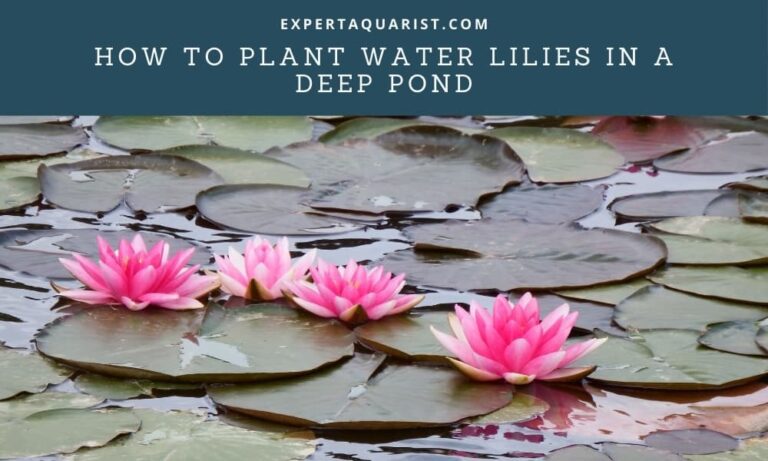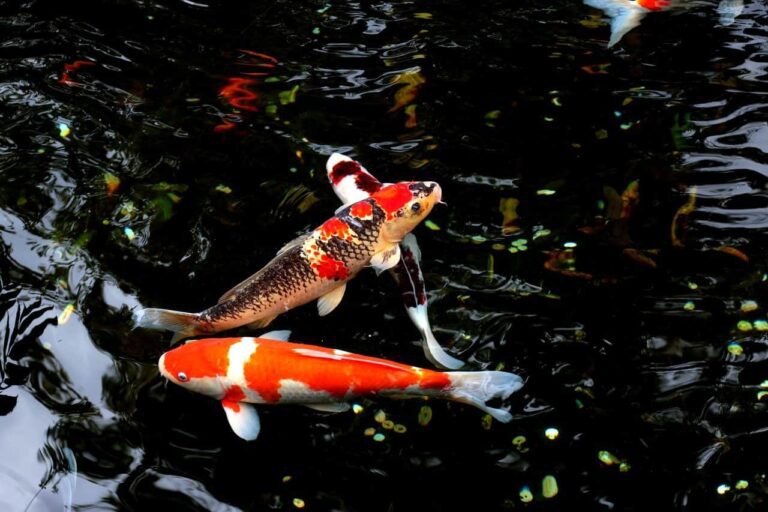Your success as a pond owner depends on the condition of your pond. And the most crucial factor that decides it is oxygen. Without oxygen, your pond is obsolete. Sadly, owners forget to take care of this aspect, resulting in an oxygen-deficient pond.
Not to worry, your pond can regain oxygen through various oxygenation and aeration methods like adding an air pump or using aquatic plants. For shallow ponds, fountains and waterfalls are also a naturally efficient way to increase oxygen circulation.
Fasten your seat belts; today, I will give you a brief but precise tour on how to increase oxygen in pond water in a few simple steps. Don’t miss out…
Why the pond needs oxygen?
Unless you have loriciferans in your pond, which I really doubt; the rest of us, including your fish, need oxygen to live. As a matter of fact, you need six ppm every day for most of the fish to just conclude their daily activities. Anything less from it and fish will start to feel discomfort.
The things you will notice in an oxygen-deficient pond would be:
Lethargy
As dissolved oxygen starts lowering, you will see your fish getting sluggish and weary. The more oxygen your pond lacks, the more you will see it happen.
Distress
While tired fishes are a typical scenario, the opposite of it also happens. Sensing they don’t have much oxygen left, and they start to roam about the pond hoping they would find oxygen anywhere.
Some even come out to the surface in desperate hopes; many of them get hunted on by birds, raccoons or wild cats, etc. in that attempt.
Suffocation
Your fish will have serious trouble breathing when dissolved oxygen falls below three ppm. If that weren’t enough, the anoxic water would stress your fish, and they will start succumbing to different illnesses.
Toxicity
Low oxygen would mean the plants in your pond won’t be able to complete the nitrification process correctly, and this, in return, would cause an imbalance in the nitrogen cycle.
This way, ammonia would be present in the pond in significant concentrations, creating toxicity and causing burns to your fish.
Algae Bloom
Anoxic waters that are stagnant is a gold mine for algae habitation. A little bit of algae is fair, but when it gets out of control and causes eutrophication and algal blooms, it creates an unwanted situation.
Fatality
When dissolved oxygen falls below two ppm. Your fish start to die.
Is there enough oxygen in the pond?
Let’s get something straight; no one lets their pond have oxygen deficiency on purpose. It’s more of an issue of owners not knowing when there is a lack of oxygen.
Testing is the best way to know if your pond has enough oxygen or not; even so, if you pay attention to these visual clues, you could save your pond from a lot of suffering:
Symptom 1: Gasping fishes
Common fishes like koi or goldfish thrive in oxygen-rich water. If you see any fish repeatedly gulping at the surface, your pond will likely have low oxygen.
Symptom 2: Odor
In ponds with insufficient oxygen levels, odor generates from various decaying vegetation and organic matters.
Symptom 3: Algae Outbreak
If you see a thick layer of algae in your pond, then your pond is in a bad state. There is no healthy aeration, and a lot of CO2 is present in the pond.
These signs can help you identify these problems early on so you can deal with them immediately. So please pay close attention to your pond.
Best methods to increase oxygen in a pond
To stop your pond from being anoxic, you must manually supply oxygen to protect your precious inhabitants from certain death.

I will discuss a few oxygenation methods for ponds that you can use to increase oxygen levels in your pond. I will include all the necessary details, the things you’d need, and some pros and cons of each. Keep reading…
Solar air pumps
Let’s start with something eco-friendly. A solar pump relies on sunlight to power up a battery-operated pump that supplies air to the pond’s bottom surface, which ultimately creates bubbles.
It is convenient in sunny places as it keeps running without you needing to do anything at all. The trouble of using it comes in cloudy areas, where obviously it’ll struggle to work correctly. But bigger models can store sunlight for days and use it as a backup when there is a shortage of sufficient lighting.
You’ll also need to replace batteries, so keep that in mind.
Air compressors
With this machine, you would pump air through a tube unit connected to the compressor unit and supply it to the bottom of the pond, creating bubbles that will supply oxygen.
A unique feature of this method is that it removes water stratification. Now depending on your point of view, it can be either a blessing or a curse. While it enables enhanced water flow and reduced algae bloom, it also produces uniform heat throughout the pond, so no cool spots in warm seasons.
Since these require an electrical connection, you need to keep bills and maintenance costs in your budget consideration. But for a vast lake, its aeration and oxygenation output potential is unmatched.
You definitely need to know that you want an aquatic air compressor; the normal ones are land-based.
Wind-driven aerators
For places where electrical connection near a pond might be tricky, an aerator powered by wind is an amicable option. It is a standard method to supply oxygen in a pond.
As the name suggests, it works via a windmill to power a pump that supplies oxygen, which travels through an airline to your pond. It works best in open areas where there is adequate airflow. If your pond is located in a hilly area, it is better due to more wind access.
This machine’s initial cost is a little high, but it’ll save you a lot of money on electric bills and maintenance costs. Plus, it is very eco-friendly. The only downside here is it won’t work without wind; however, high-tech aerators can work even with two mph of airflow.
Make sure your aerator can move an appropriate amount of air to the pond. A typical pond would be in great condition with an aerator capable of moving 1 CFM [cubic feet per minute]. For ponds that span over an acre, you’d need around 3 CFM.
Fountains/Waterfalls
Here, I present to you an aesthetic way to keep the oxygen levels stable in your pond. Using fountains and waterfalls are a classic way to add oxygen to your desired water body naturally.
No, I’m not crazy, hear me out; the water absorbs oxygen into droplets while falling into the pond where oxygen is released in the surroundings. They also provide better movement, so oxygen circulation is increased. It is a 2-in-1 benefit where you can keep your pond healthy and pretty at the same time.
However, for ponds more than 6 feet in depth, waterfalls aren’t effective, and only fountains can work up to a certain extent, so there is a question mark if it will work in your pond or if it not shallow.
To find the answer, keep an eye out whether fishes are coming out regularly to the surface or not.
Aquatic plants
Submerged plants absorb carbon dioxide and provide oxygen that your fish and other organisms can use to survive. This is just the beginning; they also suppress algae bloom, absorb excess nutrients, and provide food for your fish.
But plants use oxygen for themselves at night, so there has to be a balance amongst all inhabitants. It is particularly an issue if there are more fish and fewer plants, so you might need a secondary oxygen source, depending on the situation.
Wish a meager investment; you get an artistic and efficient resource to keep your pond healthy, so do your research properly to get the right balance.
Tips for maintaining the oxygen level in a pond
- Remove any debris from your pond.
- Try to keep your pond well-shaded.
- Clean your filters regularly.
- Balance your fish count and oxygen levels.
- Change pond water at regular intervals.
Keep your pond rich!
We should never take oxygen for granted. It is the sole component that will hold your pond together from being ruined. Your duty as an owner is to make sure there is always enough oxygen in your pond.
I have tried to give you a good rundown on how to increase oxygen in pond water, and I believe it’ll help you create a safe environment.






